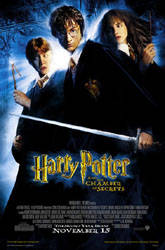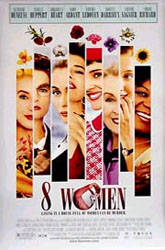 Director: Starring:
OTHER REVIEWS: Cradle Will Rock Y Tu Mamá También House of Mirth The Devil's Backbone |
Frida BY: DAVID PERRY Salma Hayek has spent the last eight years trying to get a filmed biography on Frida Kahlo, the famed Mexican surrealist artist, into theatres. Staving off the advances of Madonna and Jennifer Lopez, who wanted desperately to get their hands on another Evita or Selena, and lived with the limited budget given by Miramax, Hayek was able to get a credible director (Julie Taymor) to work on the project, promising that it would be more than one of the stuffy, oft-regurgitated biopics that come out in relentless parades. However, Taymor, evidently equally enamored with the Frida icon (she, like Evita Peron and Selena Quintanilla, has moved into the collection of female figures recognized by their first names), doesn't really find the insightfulness that would have been expected. Her previous film, Titus, was an expertly crafted re-imagining of Shakespeare's campiest work -- Taymor, joyously relishing the theatrical aspects of the story, was able to turn Titus Andronicus into a pop-art film of exasperating genius. Taymor seems to want to, instead, bring to mind the idea of "heartbreaking genius" in Frida, which is a mistake. Kahlo worked off so many painful moments that any additional dramatics brought in seems extraneous. There are perfect moments in which Kahlo is treated with the respect allotted to Jackson Pollock in Ed Harris' quieter but far more commanding Pollock, but the screaming fits seem to not come from the heart, but from the fine-tuned script. Kahlo (Hayek) did have much to scream about: a debilitating bus wreck and loss of her young lover (Luna) at 18, a series of 35 surgeries to save her body, failed pregnancy (the handlebar in the bus wreck punctured her vagina), and a philandering husband. Kahlo was, of course, the better half of Diego Rivera (Molina), but the film fails to really bring to the fore the fact that Kahlo was just as quick to bed someone else -- male or female -- as Diego. Her lovers were, for the most part, more famous -- Leon Trotsky, Josephine Baker -- but no less adulterous. One of the most unfortunate by-products of this film -- which shines within its own place as a biography but rarely excels -- is that Rivera becomes more interesting a character to follow than Kahlo. This may be in part due to the abilities of the actors: the big lug Alfred Molina has more heart in his graces than the prickly tenderness of Salma Hayek. Like Pollock, the film spends a great amount of time trying to make sense of the relationship at the artist's core. Nonetheless, Frida loses control of the rhyme and reason that Pollock was able to transcend. Why is it that he seems to be more interesting than the woman who gets most of the screen time? If Rivera is such a cad, how does Kahlo's extremely autobiographical paintings show this? The one place where Taymor adds to the work comes in her occasional attempts to work directly with Kahlo's art. In many moments, the paintings come to life as the actors impose the palettes, establishing both the self-reflexivity of Kahlo's work (which should have been dealt with more than in just these scenes) and the surprising resemblance between Kahlo and Hayek. In the film's most exquisite set piece, Kahlo wakes in her hospital bed after the wreck and finds the doctor and nurses to be surrealist animation Day of the Dead skeletons (perfectly realized by the uncredited Brothers Quay). These scenes serve as Taymor's greatest addition to the film. A visually inventive artist, her grasp of the imagery is amazing. For example, the bus wreck, a horrible moment in Kahlo's own life, is treated with such unbridled visual splendor that the final image of the bloody Kahlo lying in golden dust (which really happened) is as breathtaking as the ramifications are horrifying. Frida establishes so much about Kahlo's life
that it is impossible to fault the film for failing to be complete. But it's too resolute
at being middle ground; those involved show so much love for their subject that they
cannot find any way to delve into her other than as a near godlike figure. They show her
vices, yes, but fail to make them seem soulful -- Kahlo's paintings were torturous, but at
least they seemed to come directly from a broken, real person. |






